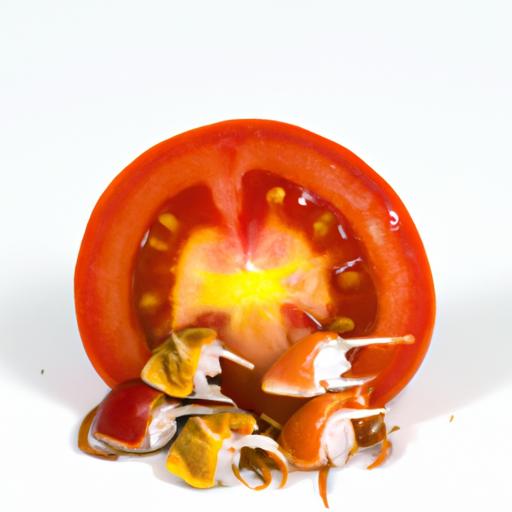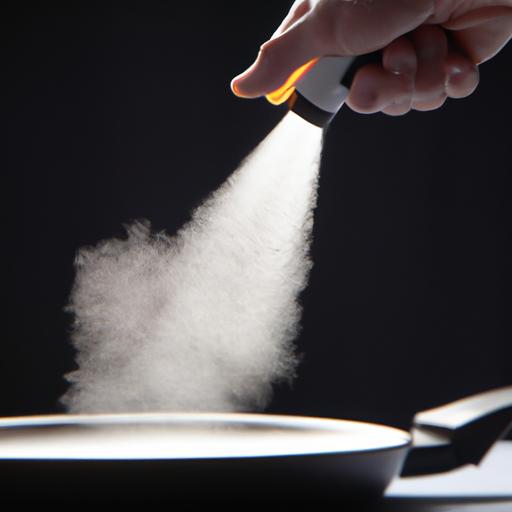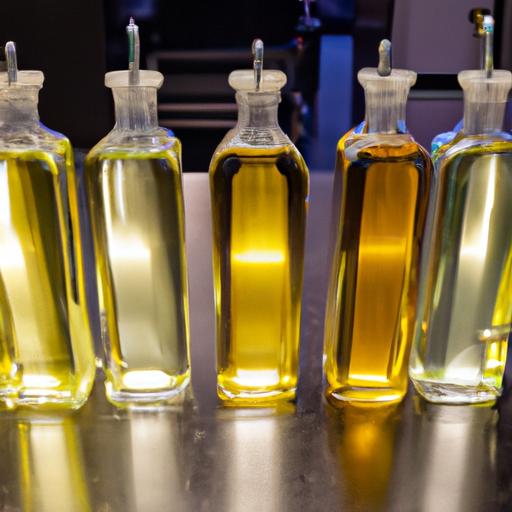Is Cooking Spray Bad for You?
Introduction
Cooking spray has become a staple in modern kitchens, allowing us to effortlessly prepare meals without worrying about sticky pans or excessive oil. But have you ever wondered if this convenient product is actually good for your health? In this article, we’ll delve into the world of cooking spray, exploring its components, potential health concerns, and safe usage practices. Let’s uncover the truth and separate the sizzle from the substance.
A. Overview of Cooking Spray
Cooking spray, also known as oil spray, is a product designed to prevent food from sticking to cooking surfaces. It typically consists of oil, lecithin, and an aerosol propellant. With just a quick spritz, we can coat our pans, grills, or baking sheets, providing a non-stick surface for cooking. This easy-to-use product has gained immense popularity due to its convenience and time-saving benefits.
B. Increasing Popularity of Cooking Spray in Modern Kitchens
In today’s fast-paced world, cooking spray has found its way into countless kitchens. Its versatility makes it a go-to choice for various cooking methods, including sautéing, baking, grilling, and even air frying. The ability to reduce oil usage while still achieving desirable cooking outcomes has made cooking spray an attractive option for health-conscious individuals. However, the rise in popularity raises important questions about its potential impact on our well-being.
Stay tuned as we explore the potential health concerns related to cooking spray, decipher its labels, and provide you with safe usage practices to make informed choices in your culinary adventures.
What is Cooking Spray?
A. Definition and Components
Cooking spray is a versatile culinary product that offers a convenient solution to prevent food from sticking to cooking surfaces. It typically contains a mixture of oil, lecithin, and an aerosol propellant. The oil component acts as a lubricant, providing a thin layer that promotes non-stick cooking. Lecithin, derived from soybeans or eggs, acts as an emulsifier, ensuring the proper mixture of oil and propellant. The aerosol propellant allows the spray to be dispensed in a fine mist.
B. Different Types of Cooking Spray Available
Cooking sprays come in various types, each catering to different dietary preferences and cooking needs. Here are a few common types:
1. Canola Oil Spray
Canola oil spray is a popular choice due to its neutral flavor and versatility. It can be used for various cooking methods, including sautéing, baking, and grilling. Canola oil spray is also known for its high smoke point, making it suitable for high-temperature cooking.
2. Olive Oil Spray
Olive oil spray is favored by those seeking a Mediterranean touch to their dishes. It adds a subtle olive flavor while imparting the benefits of monounsaturated fats. Olive oil spray is ideal for low to medium heat cooking, such as roasting vegetables or light pan-frying.
3. Coconut Oil Spray
Coconut oil spray has gained popularity among health enthusiasts due to its unique flavor and potential health benefits. It is commonly used in baking, stir-frying, and as a flavorful addition to dishes. However, it is important to note that coconut oil has a lower smoke point, so it is best suited for medium to low heat cooking.
4. Avocado Oil Spray
Avocado oil spray is prized for its mild flavor and high smoke point, making it suitable for various cooking techniques. With its heart-healthy monounsaturated fats, avocado oil spray offers a nutritious alternative to traditional cooking oils.
By understanding the different types of cooking spray available, you can choose the one that aligns with your taste preferences and cooking needs. Stay tuned as we explore potential health concerns related to cooking spray and shed light on whether it is truly bad for you.
Potential Health Concerns Related to Cooking Spray
Cooking spray, despite its convenience, has raised concerns regarding its impact on our health. Let’s delve into some potential issues that warrant our attention.
A. Inhalation Risks and Respiratory Issues
One of the primary concerns associated with cooking spray is the inhalation of its aerosolized particles. When we use cooking spray, tiny droplets and particles can become airborne and be inhaled into our lungs. This can pose a risk, especially for individuals with respiratory conditions such as asthma or chronic obstructive pulmonary disease (COPD). Inhaling these particles may lead to respiratory irritation, coughing, or difficulty breathing. It’s essential to ensure proper ventilation in your kitchen and use cooking spray in moderation to minimize the potential inhalation risks.
B. Chemical Composition and Potential Health Effects
Cooking sprays often contain additives and propellants that may raise concerns about their impact on our health. Some common additives include lecithin, dimethyl silicone, and propellants like butane or propane. While these substances are generally recognized as safe by regulatory authorities, studies suggest that prolonged and excessive exposure to certain additives may have adverse health effects. For instance, the use of cooking sprays containing lecithin has been associated with lung inflammation. Additionally, some propellants may have potential neurotoxic effects.
C. Controversial Evidence on Long-Term Health Impacts
The long-term health impacts of regular cooking spray usage are still under debate. Limited research and conflicting evidence make it challenging to draw conclusive findings. While some studies suggest that the regular use of cooking spray may be associated with an increased risk of certain health conditions, such as cardiovascular disease or cancer, others argue that the evidence is insufficient to establish a direct link. It’s important to note that the majority of studies have been conducted on animals or in controlled laboratory settings, and more research is needed to fully understand the potential long-term health impacts on humans.
As we proceed, we’ll unravel the mysteries behind cooking spray labels, empowering you to make informed decisions about the products you use in your kitchen.
Understanding Cooking Spray Labels
A. Reading and Interpreting Ingredient Lists
When it comes to understanding the potential health effects of cooking spray, one crucial step is to carefully read and interpret the ingredient lists. This allows us to identify any potentially harmful substances that may be present. Look out for common ingredients like oil, lecithin, and propellants. However, it’s important to note that not all ingredients are created equal. Some cooking sprays may contain additional additives or chemicals that could be detrimental to your health.
B. Identifying Harmful Additives or Chemicals
To make informed choices, it’s essential to be aware of harmful additives or chemicals that may be present in cooking spray. Some common culprits include artificial flavors, preservatives, and propellants like propane and butane. These additives can potentially have negative health effects, ranging from respiratory issues to allergic reactions. Paying attention to these ingredients can help you avoid potential risks and make healthier choices for you and your family.
C. Choosing Healthier Alternatives
If you’re concerned about the potential risks associated with cooking spray, there are alternative options available. Consider using a refillable spray bottle and filling it with your preferred cooking oil. This gives you control over the ingredients and allows you to choose healthier alternatives. Additionally, using a brush or a silicone basting tool can help evenly distribute oil on cooking surfaces without relying on spray products. Experimenting with different methods can not only enhance the flavor of your dishes but also provide you with peace of mind when it comes to your health.
By understanding cooking spray labels, you can navigate through the variety of options available and make informed choices that align with your health goals. Let’s explore safe usage practices in the next section to ensure you’re using cooking spray responsibly.
Safe Usage Practices for Cooking Spray
A. Proper Handling and Storage
When it comes to using cooking spray safely, proper handling and storage are key. Here are a few tips to keep in mind:
-
Shake well before each use: Before spraying, make sure to give the can a good shake. This helps ensure that the oil and propellant are properly mixed, providing an even spray.
-
Maintain distance: Hold the can approximately 6 to 12 inches away from the cooking surface to prevent excessive spraying or uneven distribution.
-
Point away from heat sources: When using cooking spray near a stovetop or open flame, always direct the nozzle away from the heat source to avoid potential flare-ups.
-
Store in a cool, dry place: To maintain the quality and effectiveness of your cooking spray, store it in a cool and dry area. Avoid exposing it to direct sunlight or extreme temperatures, as this can affect its performance.
B. Recommended Cooking Temperatures
It’s essential to be mindful of the recommended cooking temperatures when using cooking spray. Different types of cooking spray have specific heat thresholds, and exceeding these limits can lead to smoke or even combustion. Refer to the instructions on the can or manufacturer’s guidelines to determine the suitable temperature range for your cooking spray.
C. Alternatives to Reduce Reliance on Cooking Spray
While cooking spray can be a useful tool in the kitchen, it’s always beneficial to explore alternatives to reduce your reliance on it. Here are some ideas:
-
Non-stick cookware: Invest in high-quality non-stick pans or pots that require minimal or no additional oil or cooking spray.
-
Silicone baking mats: When baking, consider using silicone baking mats instead of greasing the baking sheets. These mats provide a non-stick surface without the need for cooking spray.
-
Homemade oil mists: Create your own oil mists by filling a spray bottle with your preferred cooking oil. This allows you to control the quantity and type of oil used.
By following these safe usage practices and exploring alternative cooking methods, you can enjoy delicious meals while minimizing your reliance on cooking spray. As we conclude our exploration, let’s summarize the potential risks and benefits of cooking spray usage in the final section.
Conclusion
In conclusion, the question of whether cooking spray is bad for you is a complex one. While cooking spray offers convenience and helps reduce oil consumption, it is essential to consider the potential health concerns associated with its usage. Inhalation risks, chemical composition, and long-term health impacts are factors that warrant careful consideration.
To make informed choices, it is crucial to understand cooking spray labels and identify any harmful additives or chemicals. Opting for cooking sprays with minimal ingredients and avoiding those with potentially harmful components is a step towards healthier cooking practices. Additionally, exploring alternative cooking methods, such as using non-stick pans or brushes to distribute oil, can reduce reliance on cooking spray.
Remember, moderation and balance are key. Safe usage practices, including proper handling, storage, and adhering to recommended cooking temperatures, can help minimize potential risks. By staying informed and making conscious decisions, we can strike a balance between convenience and our well-being.
So, the next time you reach for that cooking spray, ask yourself if there are healthier alternatives available. It’s all about finding the right balance between convenience and making choices that prioritize your health. Happy cooking!
Keep in mind that this article is not meant to provide personal medical advice. If you have specific concerns or health conditions, consult with a healthcare professional for guidance tailored to your situation.





